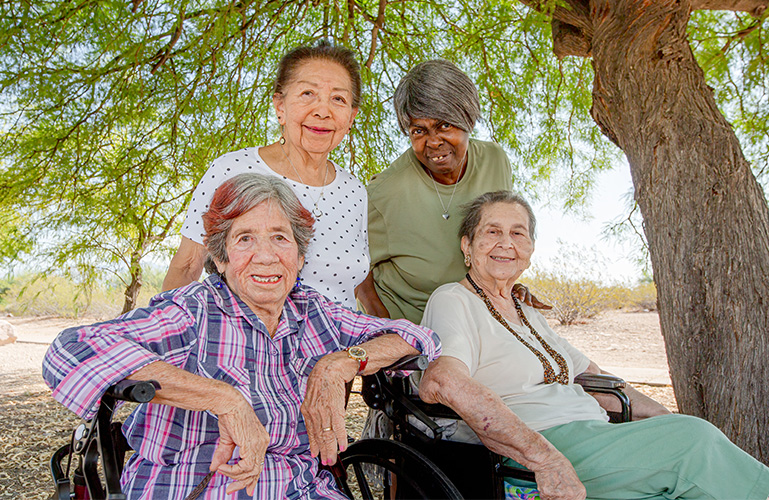Post-module quiz and acknowledgements

To complete this module and download a certificate you need to pass the post-module quiz.
Click the button below to take the quiz.
Thank you to the following people and organisations who helped create this module
Content developers:
Sarah Frost, Kylie Shae
Content contributors:
Margaret Macaulay
Reviewers:
Margaret Macaulay, Catherine Murphy
Illustration, graphics and media:
Codi Ash, Julie Desnoulez, Ainsley Hadden, Annette Inwood
Video participants:
Richard Inwood, Annette Inwood, Ash Mines, Kylie Shae
Pilot partners:
India: Mobility India; Rural Development Trust
Papua New Guinea: National Department of Health (NDOH) Health Facilities Standards Branch; National Capital District Community (NCDC) Health Services; National Orthotics and Prosthetics Service (NOPS); PNG Eye Care; WHO PNG Country Office
Romania: Motivation Romania
Tajikistan: Ministry of Health and Social Protection of the Population of the Republic of Tajikistan (MoHSP); WHO Tajikistan Country Office
Source material and references
Continence Foundation of Australia. Caring for Someone with Bladder Problems opens in a new tab/window. Canberra: Commonwealth of Australia (Department of Health); 2017 (accessed 6 January 2021).
Continence products. opens in a new tab/window Canberra: Commonwealth of Australia (Department of Health); 2016 (accessed 6 January 2021).
Continence Product Advisor opens in a new tab/window [website]. Bristol: International Continence Society; 2021 (accessed 6 January 2021).
Fader M, Cottenden A, Chatterton C, et al. An International Continence Society (ICS) report on the terminology for single‐use body worn absorbent incontinence products. opens in a new tab/window Neurourology and Urodynamics. 2020; 39: 2031– 2039. Doi: doi.org/10.1002/nau.24488
Macaulay M, Wilks S, Murphy C, Fader M, Gillespie B, Cottenden A. Are sustainable continence products an aspiration or a current option? opens in a new tab/window Nursing Time. 2020;116(9)32-37.
Malhotra NR, Kuhlthau KA, Rosoklija I, Migliozzi M, Nelson CP, Schaeffer AJ. Children’s experience with daytime and nighttime urinary incontinence – A qualitative exploration opens in a new tab/window. JPUROL. 2020;16(5) 535.e1-535.e8. doi: doi.org/10.1016/j.jpurol.2020.10.002
Altman D, Cartwright R, Lapitan MC, Milsom I, Nelson R, Sjöström S et al. Epidemiology of urinary incontinence (UI) and other lower urinary tract symptoms (LUTS), pelvic organ prolapse (POP) and anal incontinence (AI). In Abrams P, Cardozo L, Wagg A, Wein AJ, editors, Incontinence: 6th International Consultation on Incontinence, Tokyo, September 2016 . Bristol: International Continence Society; 2017.
Murphy C, Cowan A, Moore K, Fader M. Managing long term indwelling urinary catheters opens in a new tab/window. BMJ. 2018; 363:k3711. doi: doi.org/10.1136/bmj.k3711 opens in a new tab/window.
Murphy C, de Laine C, Macaulay M, Fader M. Development and randomised controlled trial of a Continence Product Patient Decision Aid for men postradical prostatectomy opens in a new tab/window. J Clin Nurs. 2020;29(13-14):2251-2259. doi:10.1111/jocn.15223.
Rosato-Scott C, Barrington DJ, Bhakta A, House SJ, Mactaggart I, Wilbur J. How to Talk About Incontinence: A Checklist opens in a new tab/window. Brighton: The Sanitation Learning Hub, Institute of Development Studies; 2020 (accessed 6 January 2021).
Rosato-Scott C, Barrington DJ, Bhakta A, House SJ, Mactaggart I, Wilbur J. Incontinence: We Need to Talk About Leaks. Frontiers of Sanitation: Innovations and Insights. 2020;16. Doi: 10.19088/SLH.2020.005.
Rosato-Scott C, Giles-Hansen C, House S et al. Guidance on supporting people with incontinence in humanitarian and low- and middle-income contexts (LMICs). opens in a new tab/window Leeds: LMIC-Incontinence-email-group , University of Leeds; 2019 (accessed 6 January 2021).
Schmitt ML, Clatworthy D, Gruer C, Sommer M. Menstrual Disposal, Waste Management & Laundering in Emergencies: A Compendium (First edit). opens in a new tab/window New York: Columbia University and International Rescue Committee; 2020 (accessed 6 January 2021).
Understanding Continence Promotion: Effective Management of Bladder and Bowel Dysfunction in Adults opens in a new tab/window [online course]. Seafield: Association for Continence Advice; 2021 (accessed 6 January 2021).
Urinary incontinence opens in a new tab/window. In: Mayo Clinic [website]. Rochester: Mayo Foundation for Medical Education and Research; 2021 (accessed 6 January 2021).
Further reading
Association for Continence Advice, Understanding Continence Promotion: Effective Management of Bladder and Bowel Dysfunction in Adults. opens in a new tab/window : International Consultation on Incontinence (ICI), International Continence Society (ICS), University of Southampton and University College London, Continence Product Advisor opens in a new tab/window.

